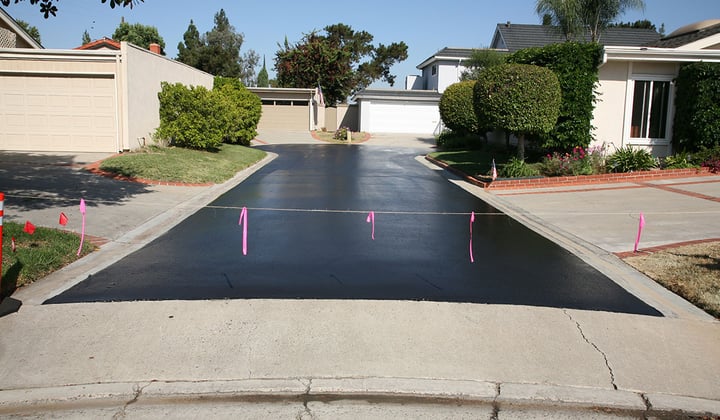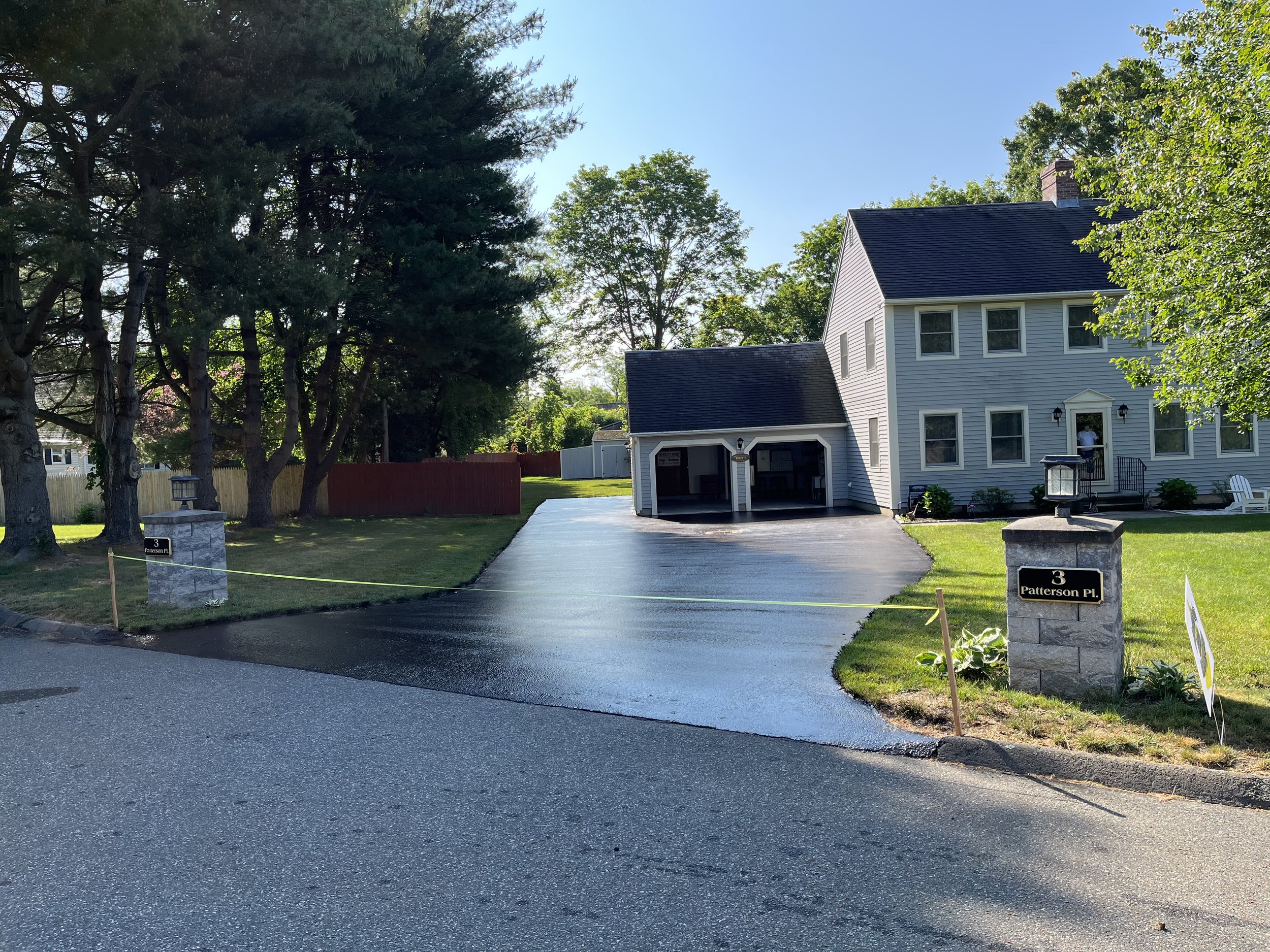Optimize Security with Angle Parking Lot: Superior Asphalt Sealing
Optimize Security with Angle Parking Lot: Superior Asphalt Sealing
Blog Article
Cold Mix Asphalt Vs. Hot Mix Asphalt: Which Is Right for You?

Composition Differences
Cold mix and hot mix asphalts differ significantly in their structure, with unique characteristics that impact their efficiency and applications. Cold mix asphalt is created by emulsifying the asphalt binder with water and an emulsifying agent prior to mixing it with accumulation. This method permits the asphalt to be convenient at lower temperatures, making it optimal for momentary fixings and for usage in cooler weather. Hot mix asphalt, on the various other hand, is manufactured at heats, generally between 300-350 ° F, which aids to attain better compaction and an extra durable end product. The warm mix asphalt manufacturing process entails warming the accumulation and asphalt binder separately before integrating them at the asphalt plant.
Furthermore, cold mix asphalt has a tendency to be less dense and extra flexible than warm mix asphalt. This adaptability makes it far better fit for locations with higher degrees of movement, such as driveways or roads with rush hour. On the other hand, warm mix asphalt is recognized for its high toughness and resistance to rutting and splitting, making it a recommended choice for freeways and high-traffic roads where long life is critical.
Installment Refine Variations
The process of installing cool mix and hot mix asphalt shows remarkable variances in their procedures and demands. In comparison, warm mix asphalt demands an extra sophisticated setup process. Due to the home heating requirements, hot mix asphalt installations are commonly lugged out by specialists with customized tools, making sure a much more long-term and structurally sound outcome.
Durability and Longevity Aspects
When considering asphalt alternatives, sturdiness and long life are crucial variables to evaluate for enduring sidewalk performance. Hot mix asphalt (HMA) is known for its phenomenal longevity and durability.
In terms of longevity, HMA usually outperforms CMA due to its superior strength and resistance homes. HMA sidewalks have a longer life span, needing less frequent repairs and maintenance, which can translate to set you back financial savings over time. Furthermore, HMA pavements are more easily customizable to fulfill particular task needs, further boosting their sturdiness.
Cost Considerations
Taking into consideration the economic effects is a crucial element when examining the selection in between warm mix asphalt (HMA) and cool mix asphalt (CMA) for sidewalk jobs. While the first expense of warm mix asphalt is usually more than that of cool mix asphalt, HMA usually gives a much more affordable service in the long run due to its remarkable resilience and longevity. HMA is recognized for its ability to hold up against rush hour tons and harsh weather, minimizing the requirement for constant repairs and upkeep. On the other hand, cold mix asphalt is a lot more budget friendly ahead of time but might call for more frequent patching and resurfacing, bring about greater maintenance expenses gradually.
In enhancement to product prices, it's important to think about the expenditures related to setup and upkeep when contrasting HMA and CMA. HMA normally requires customized tools and experienced labor for appropriate installation, which can influence general job costs. Alternatively, CMA is easier to deal with and can frequently be applied using easier methods, potentially decreasing setup expenditures. Eventually, the decision in between HMA and CMA should take right into account not just the first expense but likewise the long-term monetary implications to establish the most cost-efficient choice for the specific pavement task.
Environmental Effect Contrast
Comparison of the environmental effects in between hot mix asphalt (HMA) and chilly mix asphalt (CMA) exposes distinctive differences in sustainability practices. HMA production needs heats, resulting in boosted power consumption and greenhouse gas emissions. The process likewise launches unstable natural substances (VOCs) and unsafe air pollutants (HAPs) into the atmosphere. In comparison, CMA is created and used at reduced temperature levels, decreasing energy usage and discharges substantially. The reduced manufacturing temperature levels of CMA cause lowered gas intake and reduced degrees of carbon dioxide exhausts, making it an extra eco-friendly alternative.
Additionally, the use of CMA typically includes recycling existing asphalt pavement, advertising source conservation and reducing the original site quantity of waste sent out to landfills. This recycling aspect further boosts the sustainability of CMA compared to HMA. In general, when thinking about the environmental influence, CMA becomes a much more environmentally sustainable selection because of its lower power demands, decreased emissions, and the possibility for recycling existing materials. By choosing CMA over HMA, address road building projects can add positively to ecological preservation efforts.
Final Thought
Finally, the selection between chilly mix asphalt (CMA) and warm mix asphalt (HMA) depends on different factors such as structure, installment process, longevity, longevity, expense, and ecological influence. angle parking. While CMA uses a fast and affordable solution for minor repair services, HMA makes certain superior sturdiness and long life for rush hour areas. Think about these elements thoroughly to establish which sort of asphalt is the right choice for your paving needs

Considering the monetary effects is an important facet when assessing the option in between hot mix asphalt (HMA) and chilly mix asphalt (CMA) for sidewalk projects. While the initial expense of warm mix asphalt is typically higher than that of cool mix asphalt, HMA often offers a much more cost-efficient service in the long run due to its remarkable durability and longevity. asphalt patch repair.Contrast of the ecological influences between hot mix asphalt (HMA) and cold mix asphalt (CMA) exposes unique distinctions in sustainability techniques.In verdict, the selection in between cool mix asphalt (CMA) and hot mix asphalt (HMA) depends on various elements such as composition, setup process, sturdiness, durability, expense, and ecological effect
Report this page